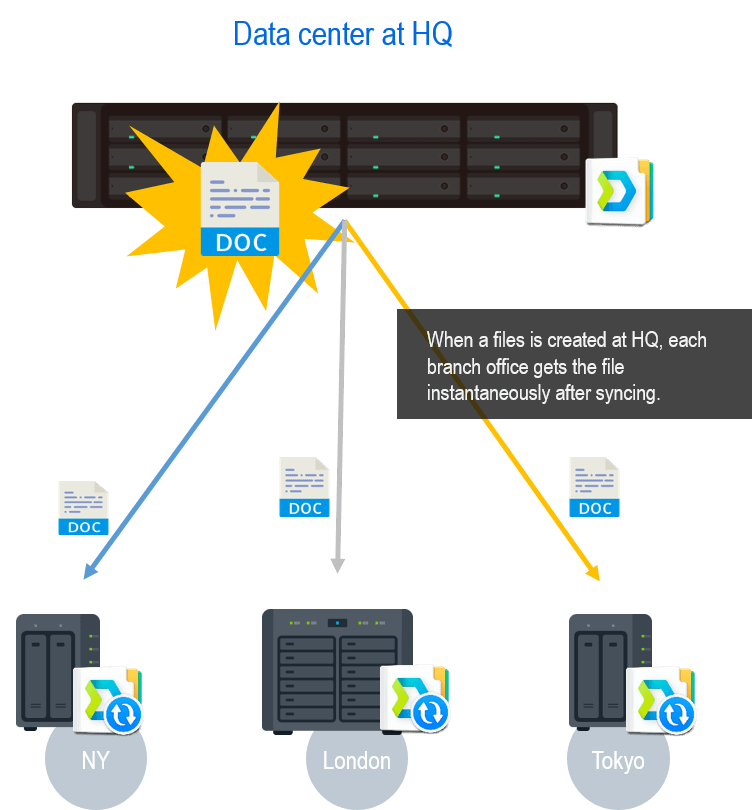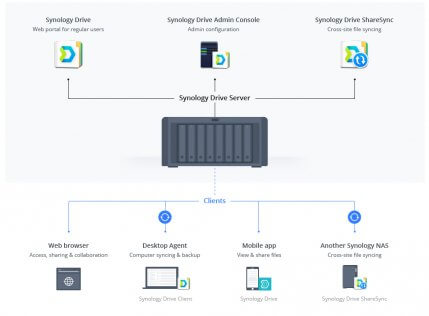Synology spotlights how organisations can increase productivity and reduce costs with NAS
The enterprise workforce has long been spread across multiple office sites. But today they’re also working from living rooms, airports, coffee shops and other remote locations. In fact, research shows that nearly two-thirds of organisations today have remote workers. This new reality presents several IT and data management challenges.
With remote teams, file sharing can be cumbersome and can slow down productivity because of poor bandwidth. Moreover, if your organisation lacks a centralised data management system, storage usage will increase due to unnecessary redundancies. There’s also the risk of losing critical data due to a lack of centralised backup and recovery.

With the right data management strategy, businesses can turn challenges of the modern workplace into advantages that set you ahead of the competition.
Finding the right data management strategy
Traditionally, businesses have kept data stored in one server or cloud, meaning employees at remote offices would have to deal with slow transfer speeds. These days, multi-site businesses can set a new structure for data storage and management by deploying a large network-attached storage (NAS) device at company headquarters and a smaller NAS at each branch office. From there, you can easily sync files between NAS systems and across offices.
As one example, you could set up Synology’s XS/XS+ series at HQ, which accommodates over a petabyte of storage capacity. For branch offices and other remote locations, you might consider a model from Synology’s Plus series, which offers storage capacity and performance suitable for smaller offices. The ability to scale easily and sync with your central NAS — while using the same software suite — is one of the chief perks of a solution like ours.

Graph I. When a file is created at HQ, each branch office gets the file instantaneously after syncing
While your exact setup might vary from the example above, this overall approach to data management yields powerful results. By deploying NAS devices at each business site, employees don’t have to connect to HQ directly, which means they enjoy faster read/write access. To make things even easier, they can map to a network drive and save time (and confusion) by not having to email large files back and forth.

Graph II. Synology Drive makes files readily available whenever and wherever you need them.
With this new structure, you’ll also reduce resource usage. Since files are synced to the local NAS rather than employees’ individual computers, there will be less redundant files taking up storage space. This also makes it easier to manage and reduce office bandwidth consumption.
Additional strategies for multi-site data management
With a Synology NAS deployed at HQ and each business site, it becomes possible to set up a data backup and disaster recovery plan without having to rent space from another vendor. This does not only protect your data in the event of a disaster but also saves you the headache of dealing with multiple vendors.
It is also ideal to deploy a Centralised Management System (CMS), which can save IT admin time and effort by allowing them to manage multiple NAS devices from one central location, rather than having to physically visit each office with a NAS setup. With Synology’s CMS, IT admins can use a single dashboard to check the status of each server and keep each server’s software up-to-date, as well as delegate administrator permissions to specific employees, allowing them to manage certain settings on specific servers.
How Krys Group overhauled their file sharing system
Krys Group, a French optical company with over 1,300 shops, needed to streamline how it sends communications materials across multiple branches, which previously entailed sending files through the Internet to a file server. With the aim to overhaul this process, Krys approached Synology who recommended setting up a NAS in each store for file sharing. With this new structure, Krys benefitted from a more stable architecture, which in turn reduced costs as minimal maintenance was required. Additionally, the company’s IT admin and employees can now enjoy a simpler system management and higher efficiency.
With a growing business, you’ll inevitably encounter roadblocks, but don’t let the size of your business be your weakness. With the right data management strategy, you can turn your challenges into business opportunities that will drive productivity, reduce costs and — most importantly — keep your data secure.
Synology® at a glance
Staying at the forefront of data management, Synology innovates and adapts to ever-evolving technologies, and continues bringing new possibilities to the table, including but not limited to solutions for data storage and backup, file collaboration, video management, and network infrastructure – all designed with one goal in mind – presenting a centralized platform to simplify IT administration while driving digital transformation for businesses worldwide.
For more information, kindly visit Synology Global Page
- Learn more about Synology Drive Here
- Contact Synology Here
- Partner with Synology Here
- Learn more about File Server & Backup Solution|Synology





